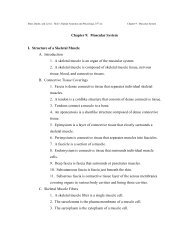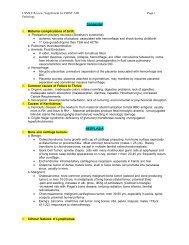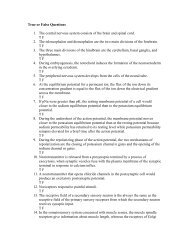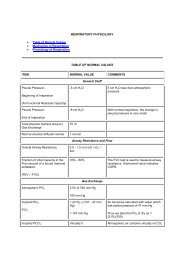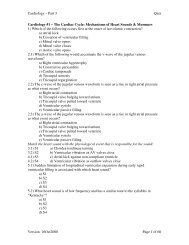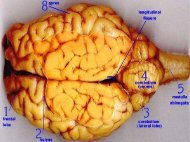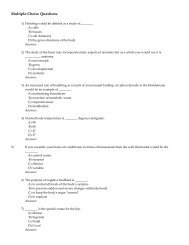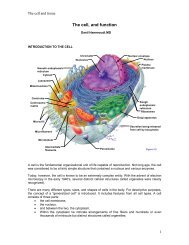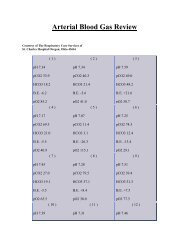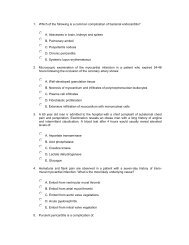Blood Vessels - Sinoe medical homepage.
Blood Vessels - Sinoe medical homepage.
Blood Vessels - Sinoe medical homepage.
Create successful ePaper yourself
Turn your PDF publications into a flip-book with our unique Google optimized e-Paper software.
should be used each time as in some individuals there are differences in the right and leftbrachial artery pressures. An appropriate size cuff should also be used; ideally the bladder ofthe cuff should encircle the arm, but if this is not feasible the centre of the bladder must beplaced directly over the brachial artery. Tight or constricting sleeves of clothes pushed up toallow application of the cuff will also give false readings.Observer bias, especially by looking at previously charted values and expectations ofindividuals' values, e.g. older people having higher blood pressures, is also a potential sourceof inaccuracy. The observer should also be at eye level with the mercury manometer scalewhen reading off the values. For some reason observers show a strong preference for theterminal digits 0 and 5, e.g. 125/75 mmHg, even though a 5-mmHg mark does not appear onmany scales!It is advisable to record an approximate value for systolic pressure by palpation, beforeauscultation, because in some people the Korotkov sounds appear normally giving the systolicpressure, but then disappear for a short time before returning above the diastolic pressure.This period of silence is known as the auscultatory gap and, although nothing can be heard, thepulse can be felt.On many occasions it may not be possible to obtain all the optimum conditions, and if this isthe case the qualifying factor(s) should be recorded on the chart, e.g. '150/94 mmHg - patientin severe pain'.Figure 4. Factors influencing accuracy of sphygmomanometer readingSphygmomanometer:Height, Upright scale,maintenance, clogged vent,levelof mercuryNurse: Training, ObserverBias, Preferred digit,Lack ofconcentration, Sight,Hearing,Distance fromsphygmomanometer,DiastolicdilemmaState ofpatient: Anxiety,Pain, Fear, Recentexercise, Fullbladder, Food,Tobacco, Alcohol,Obesity,Arrhytmias.Cuff: Correct application,Dimensions of bladder,Positioning of bladder.Patient: Position,Right Arm, LeftArm, Support toarm.Environment: Temperature, Noise, DistractionsIf it is not possible to use the arms for blood pressure readings, it is possible, using speciallarge leg cuffs, to record the blood pressure using the Korotkov sounds from the poplitealartery in the popliteal fossa (at the back of the knee). The technique is more cumbersome but





